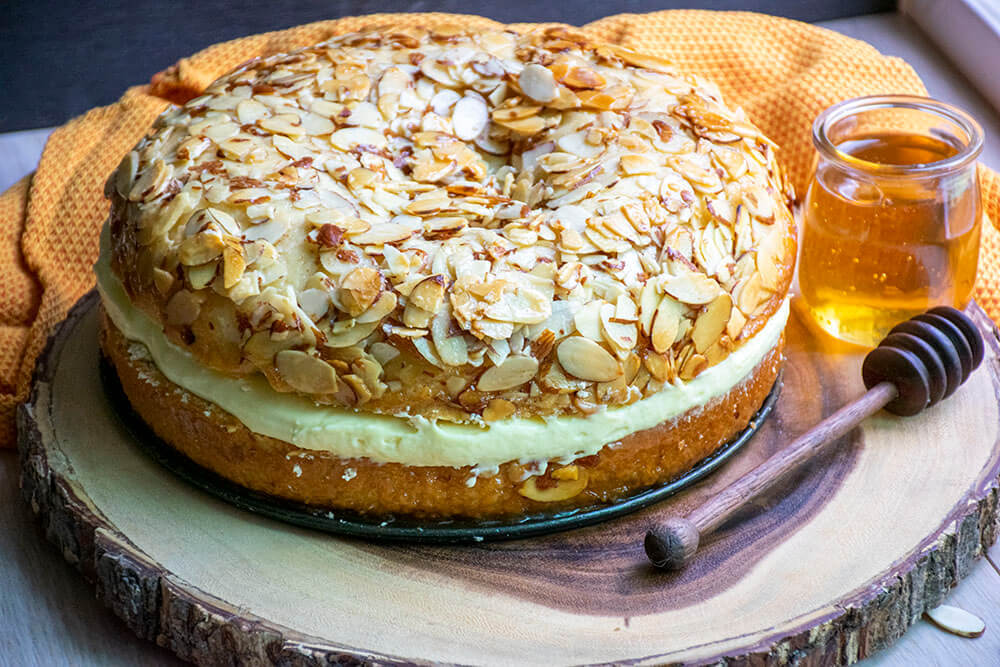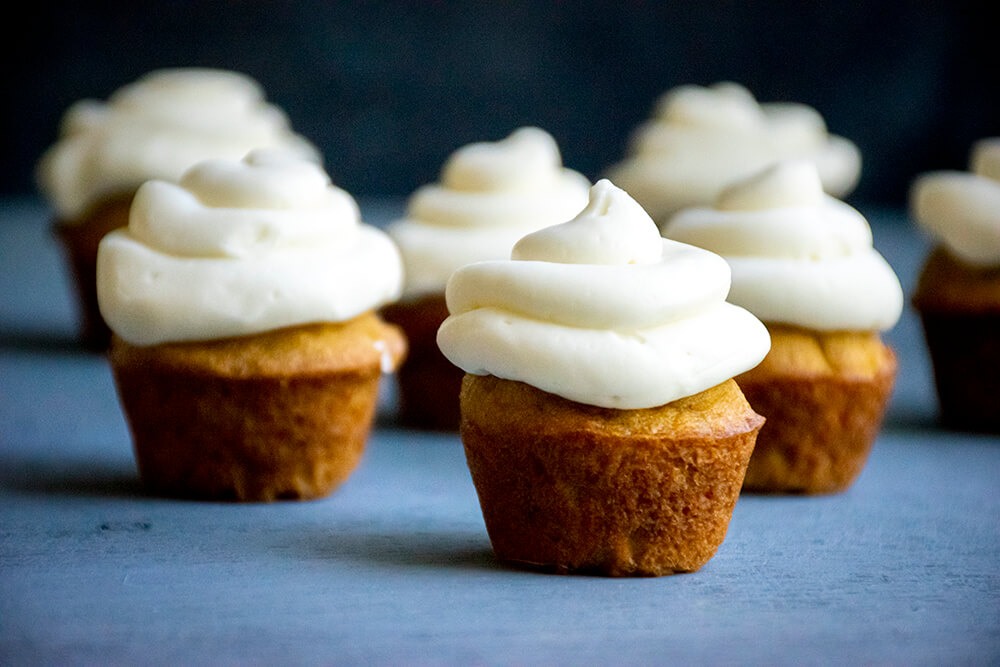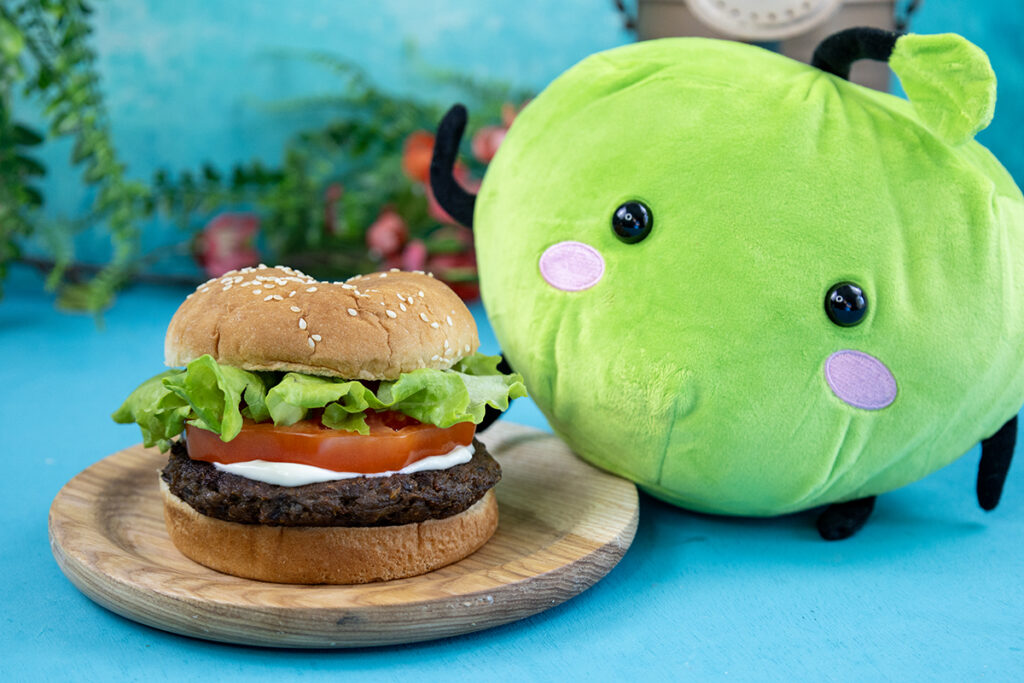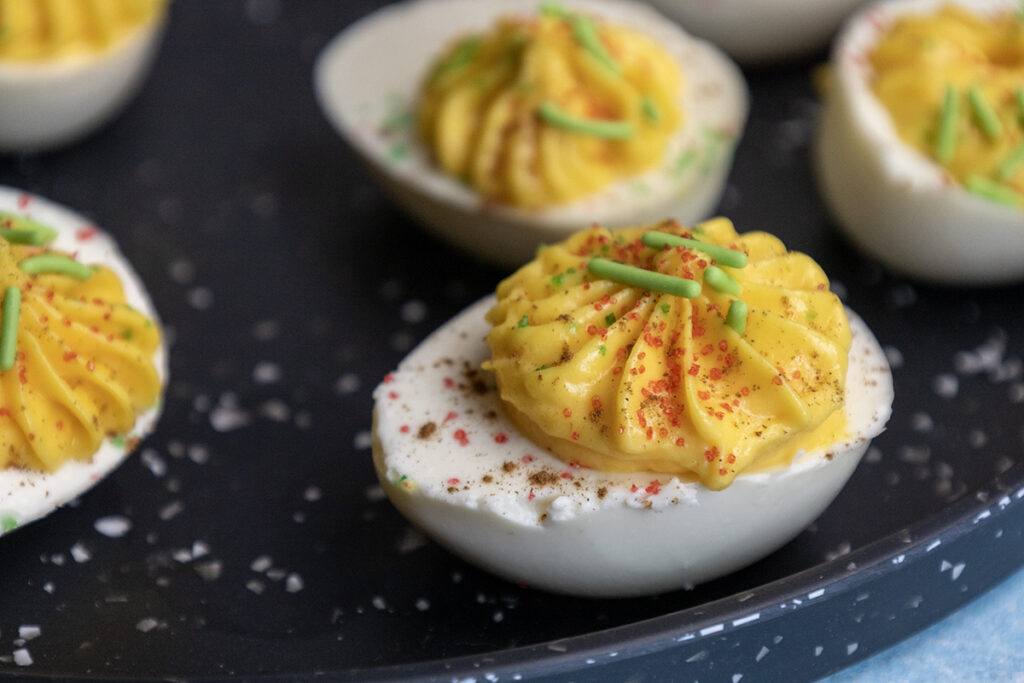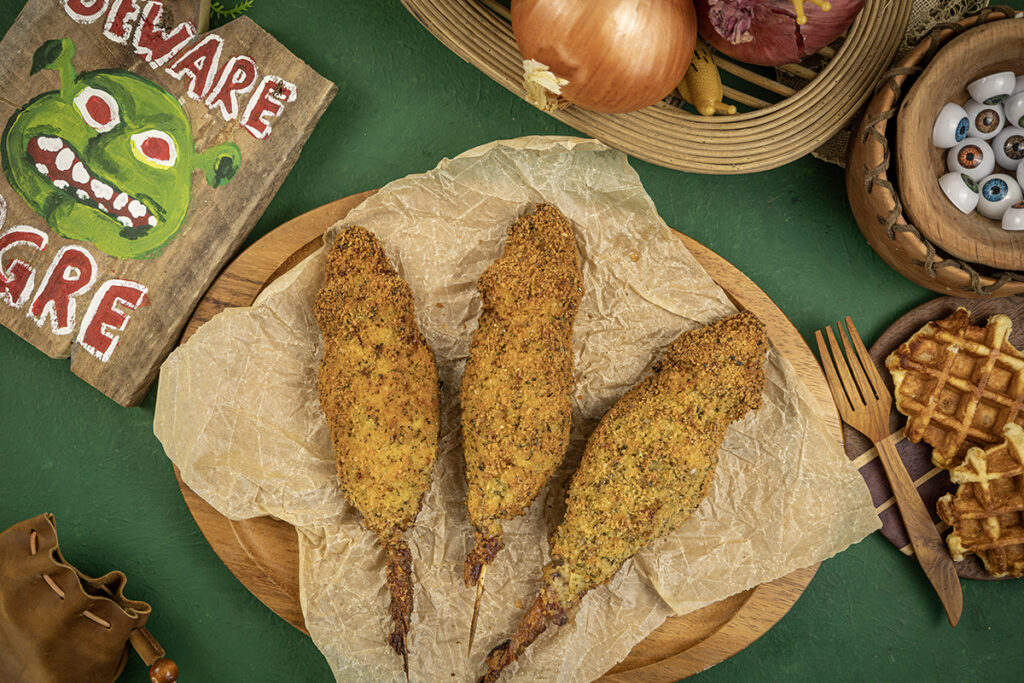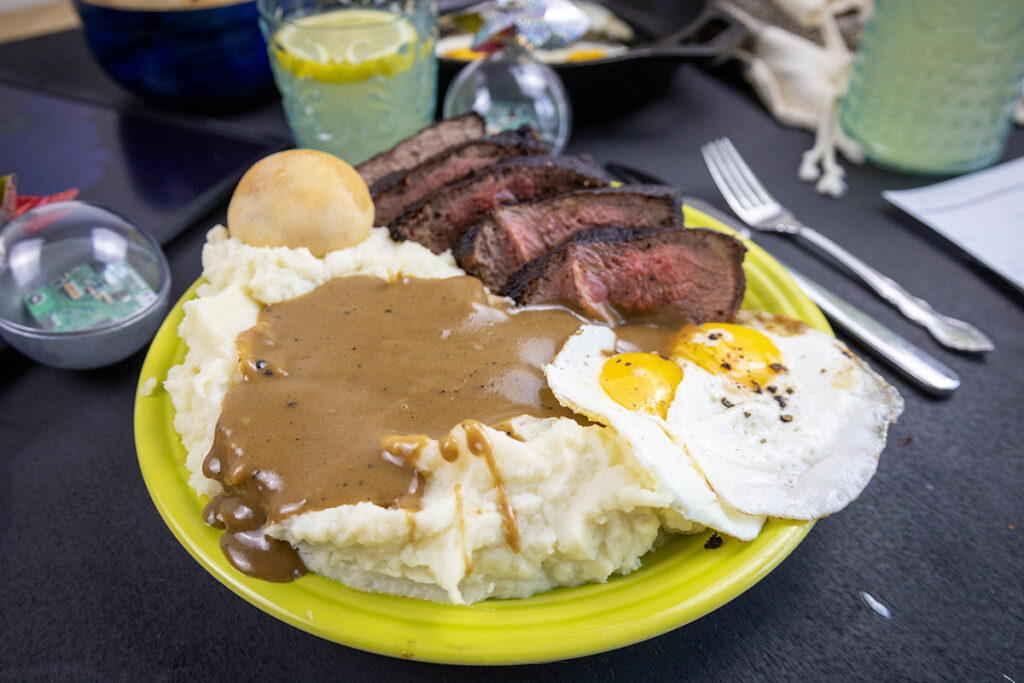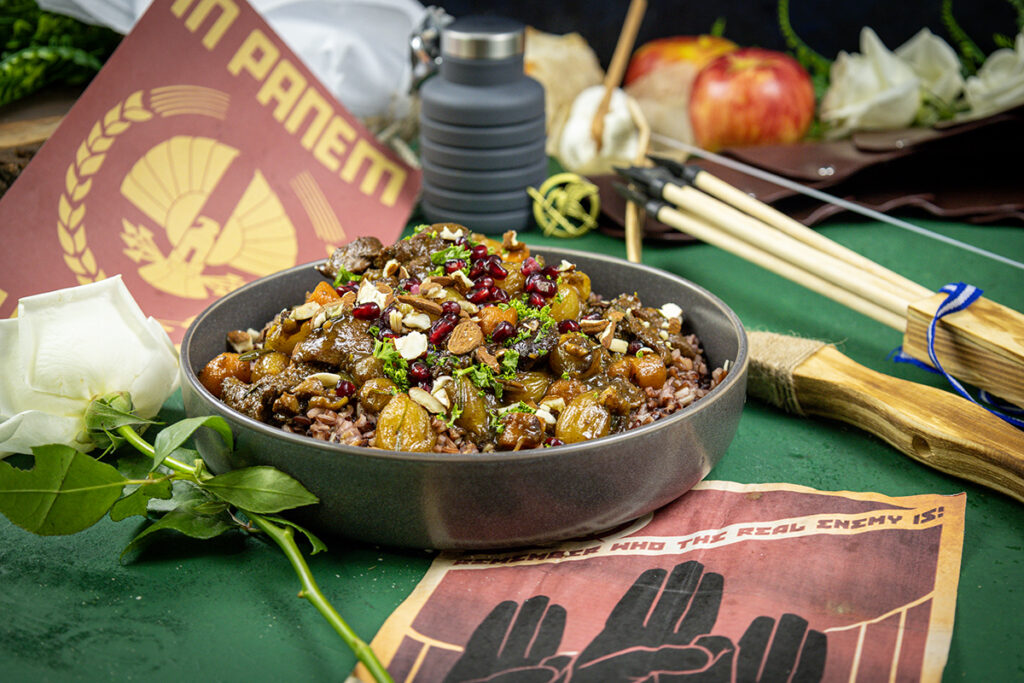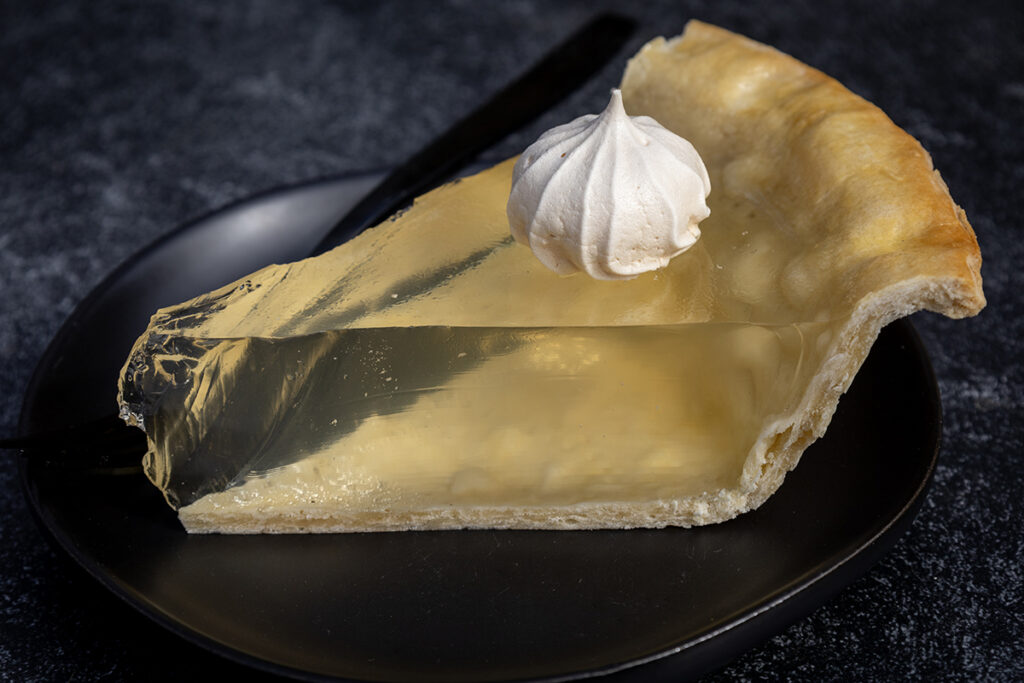Creamy Thai Curry with Prawns and Scallops
The Starving Chef is supported by Hungry People like you. When you make a purchase through an affiliate link on my site, I may earn a little bit of cash on the side (at no extra cost to you) to help keep my kitchen running. Read our disclosures here.
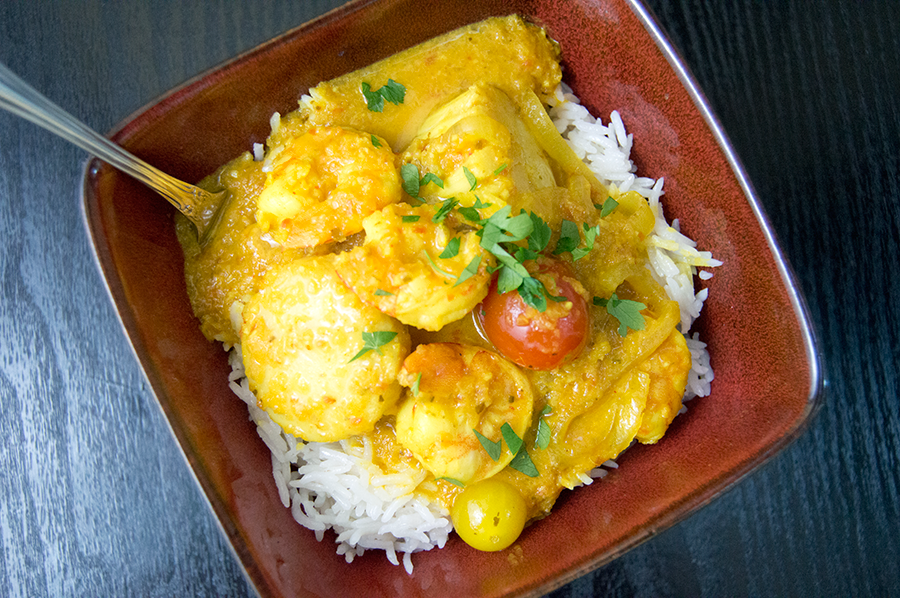
What’s up, Hungry People?
I was buzzing with excitement when I found out that this week’s challenge had roots in the Malaysian culinary world. It’s like Indian and Thai flavors had a beautiful baby!
This week took me on a virtual trip across the internet, diving into Malaysia’s rich food history. What did I find? Well, turns out, Malay cuisine is a melting pot of Chinese, Indonesian, Thai, and Indian influences. My Ohio kitchen has never felt so international, and I can’t wait to eventually travel and taste these flavors right from the source (2023 UPDATE: I DID IT!).
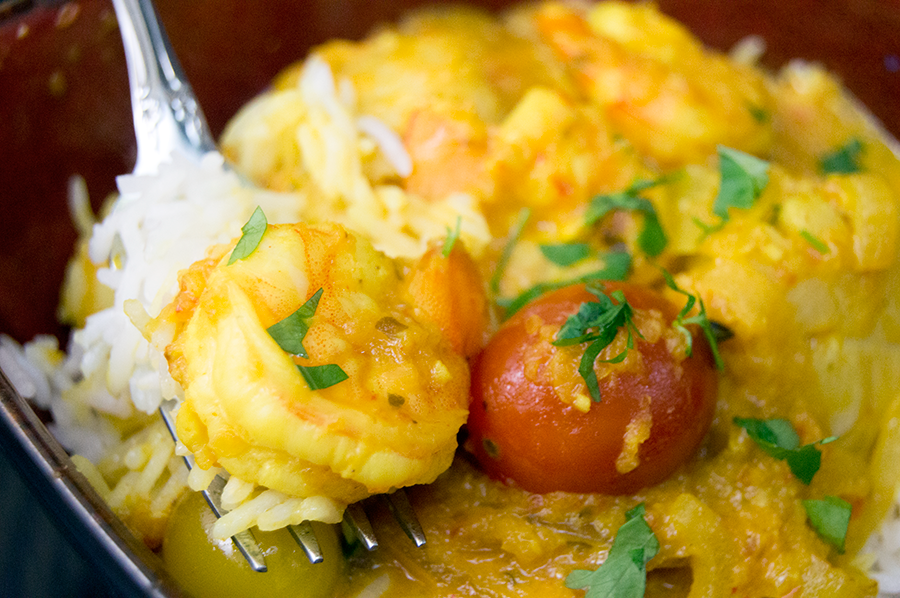
Making the Curry Base
This curry recipe is a flavor explosion, no kidding! We’re using a medley of Thai and Malaysian ingredients, like red curry paste and tamarind chutney. These blend beautifully with staples like onion, mellow turmeric, and the creaminess of coconut milk. Trust me, this makes one knockout curry sauce!
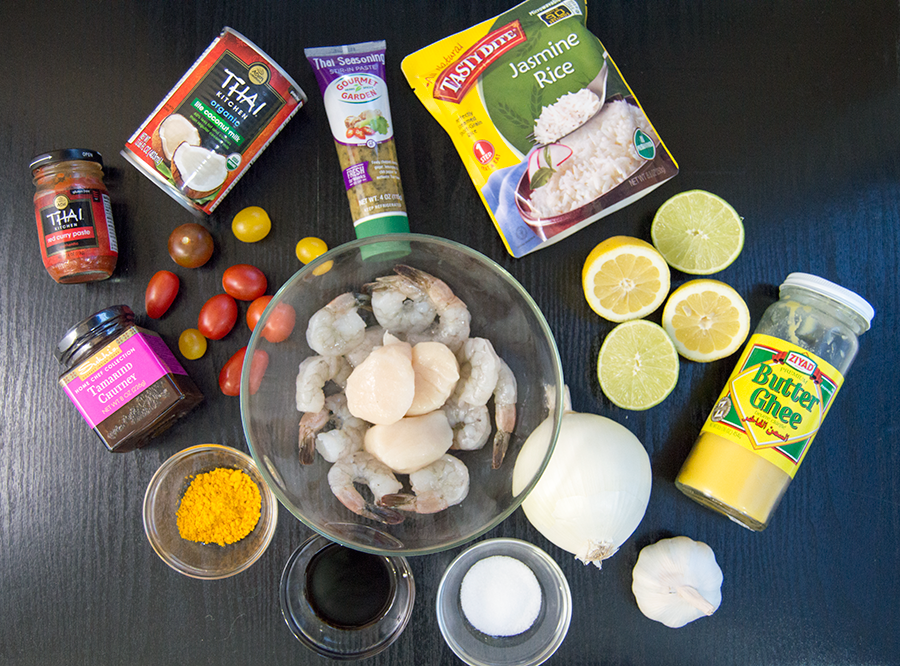
Here’s What You Need
- Shrimp: Adds a tender, meaty element to the curry, soaking up the flavors beautifully.
- Scallops: These provide a luxurious, buttery texture that contrasts well with the shrimp.
- Coconut Milk: The creamy base of the curry, it balances out the spices and adds a tropical flair.
- White Onion: Offers a foundational aromatic layer, while also contributing a bit of sweetness when caramelized.
- Thai Seasoning Paste: A potent mix that introduces key Thai flavors like lemongrass, cilantro, ginger, and chili pepper into the dish.
- Tamarind Chutney: Adds a sour and sweet tang to the curry, making the flavors more complex.
- Turmeric Powder: Provides a subtle earthy undertone and gives the curry its vibrant yellow color.
- Red Curry Paste: Infuses the dish with heat and depth of flavor, incorporating spices and aromatics.
- Soy Sauce: Adds umami and a hint of saltiness, rounding out the flavors.
- Sugar: Counterbalances the heat and tang, adding a slight sweetness to the sauce.
- Garlic: Brings aromatic and spicy notes, a staple in many types of curry.
- Cherry Tomatoes: Add a burst of natural sweetness and slight acidity to balance the flavors.
- Lemon Juice: Offers a citrusy tang, brightening up the entire dish.
- Lime Juice: Similar to lemon, but adds its own distinct citrus kick.
- Ghee: Used for sautéing, it has a higher smoke point and adds a rich, buttery flavor.
- Salt & Pepper: Basic seasonings to enhance all other flavors and make them pop.
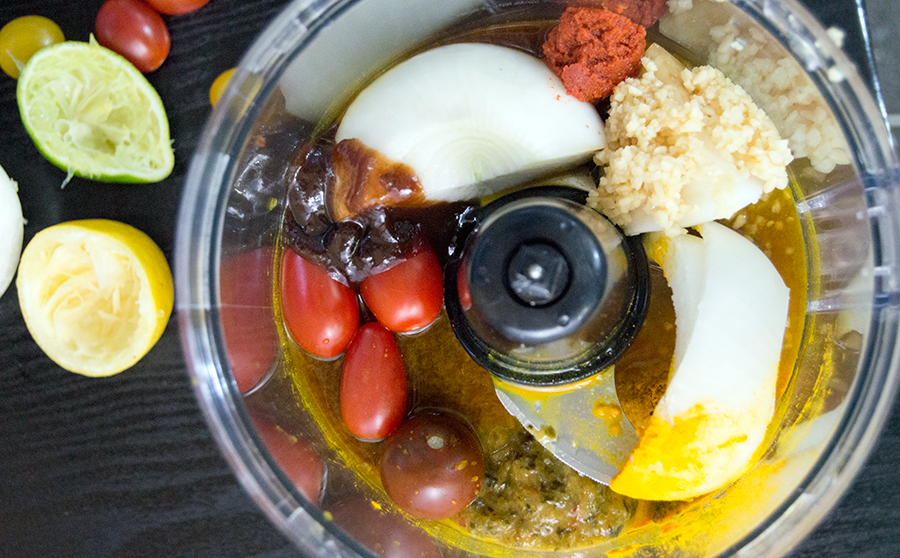
Let’s Cook!
Start off by blitzing half of the white onion, cherry tomatoes, and the lemon and lime juices in a food processor. Throw in the garlic, red curry paste, Thai seasoning paste, tamarind chutney, and a little sugar for good measure.
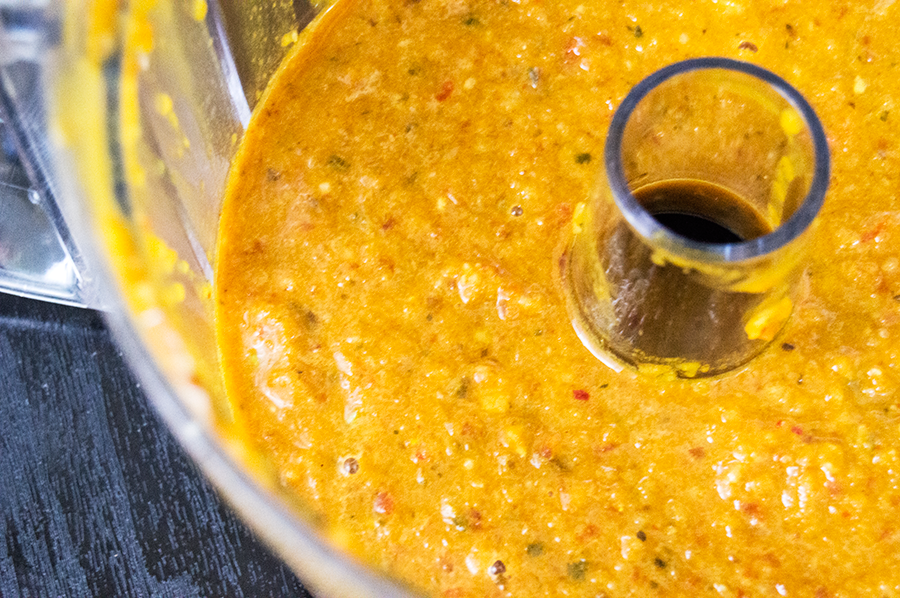
The Sauté and Simmer Steps
Get a couple of tablespoons of ghee melting in a wok, and then toss in the onions. Sauté those bad boys until they’re tender. This is also the time to add any other veggies you want in your curry. Red peppers, baby corn, water chestnuts—they’re all fair game.
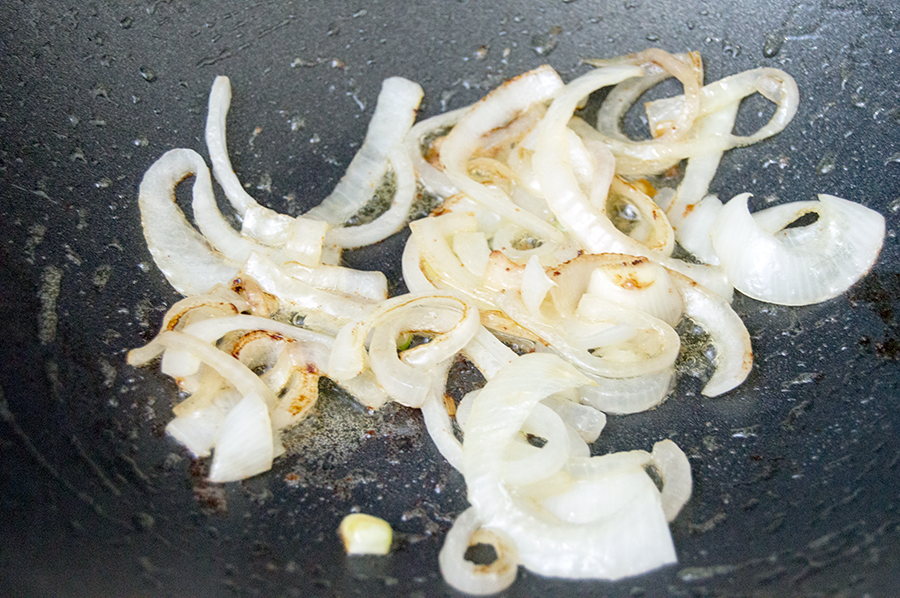
Pour that aromatic onion and spice puree into the wok, and let the magic happen. Allow the mixture to simmer until you see it separating—liquids on one side, solids on the other. This trick helps you get the most bang for your flavor buck.
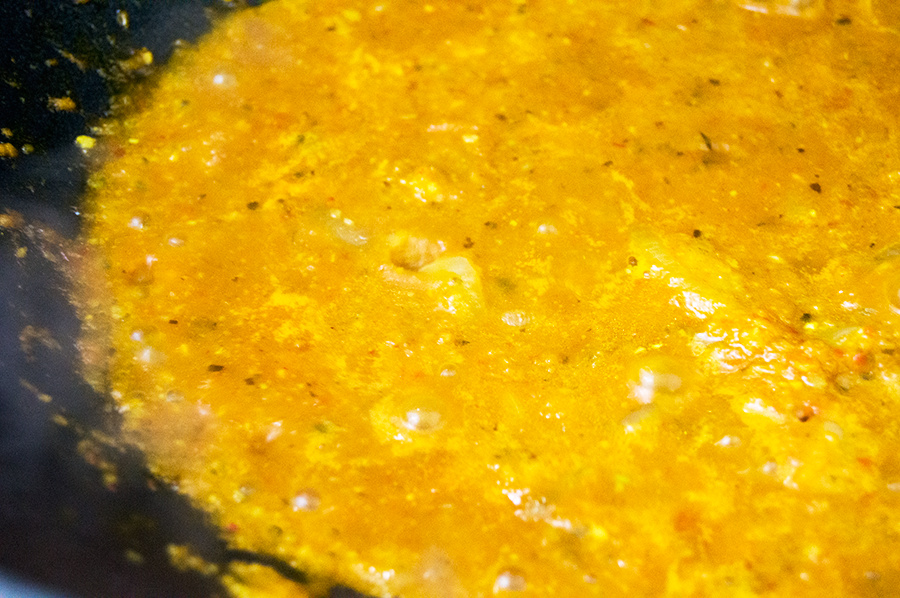
Bringing it All Together
Time to bring in the coconut milk. Stir it in and let the sauce simmer a bit until everything’s all cozy and warm. If you’re adding scallops, make sure to sear them first until each side has a nice brown crust before mixing them into the simmering sauce. This sauce is pretty versatile, so feel free to use it with other seafood or even meats like chicken or lamb.
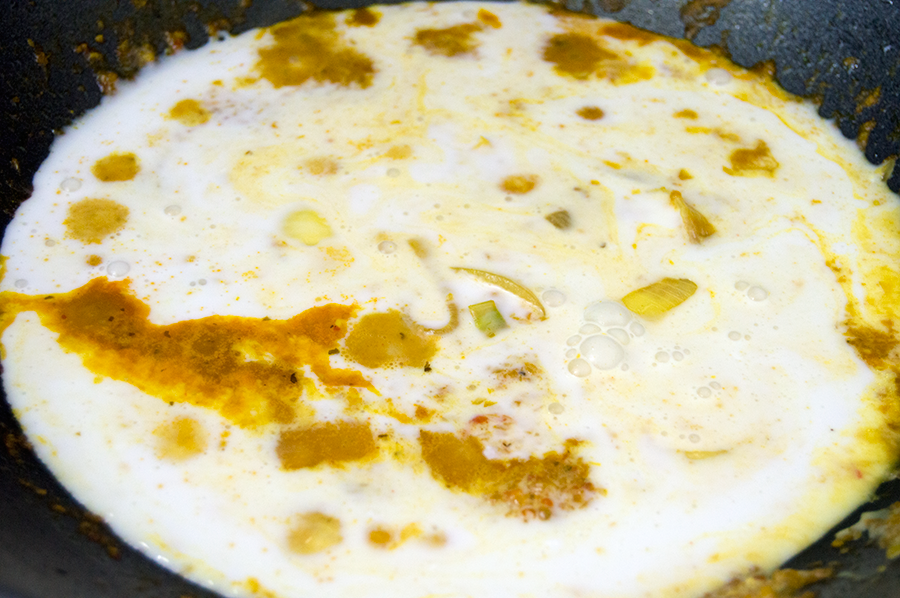
The Final Touch: Adding the Shrimp
Almost there, Hungry People! Add the shrimp and let them simmer for about 2-3 minutes, just until they turn that perfect shade of pink.
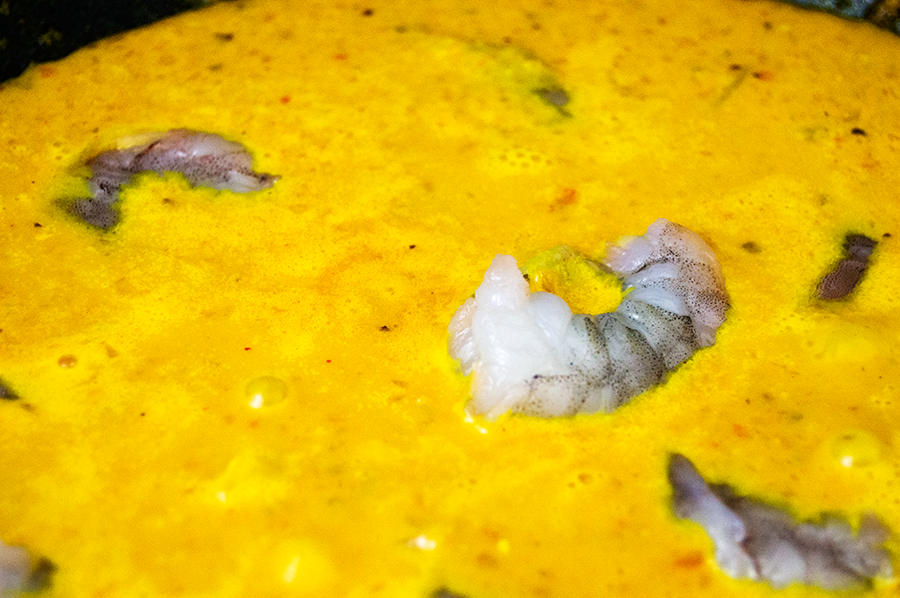
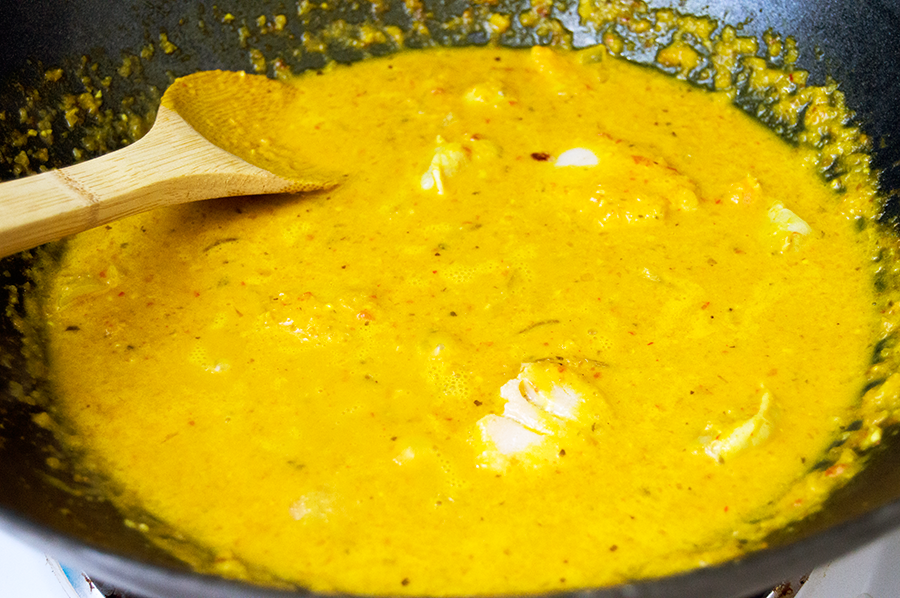
The Rice Situation
I went with ninety-second rice because, let’s be real, the curry was ready in ten minutes and I wasn’t about to wait another twenty for rice. But hey, use your favorite rice; just make sure to adjust your cooking times so nothing gets overcooked.
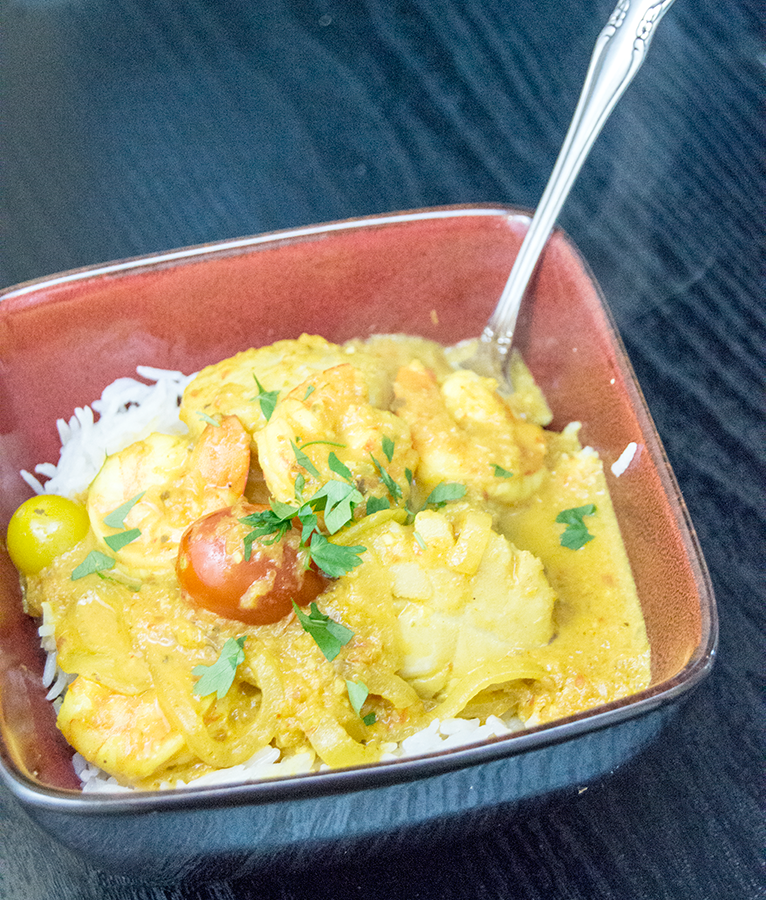
Tips for Perfect Shrimp Curry
- Ingredient Substitutions: If you can’t find Thai seasoning paste, a mix of fresh lemongrass, cilantro, ginger, and chili flakes can work in a pinch.
- Onion Alternatives: Shallots can replace white onions for a milder, sweeter flavor.
- Coconut Milk Consistency: If your coconut milk is too thick or too thin, you can balance it by adding a little water or reducing it over low heat, respectively.
- Avoid Overcooking Seafood: Both shrimp and scallops cook quickly. Keep an eye on them to prevent them from becoming rubbery.
- Spice Levels: If you find the curry too spicy, adding a dollop of yogurt can help mellow out the heat.
- Searing Scallops: Make sure your wok is hot enough before adding the scallops to get that nice, browned sear.
- Tomato Texture: If you prefer a smoother sauce, you can remove the skin and seeds from the cherry tomatoes before processing.
- Sugar Control: Adjust the amount of sugar to your taste. If you find the sauce too sweet, a splash of vinegar can help.
- Storing Leftovers: This curry stores well in the fridge for up to 3 days. Just reheat gently to avoid overcooking the seafood.
- Freezing: It’s best to freeze the curry sauce separately from the seafood to maintain texture and flavor.
- Ghee Substitute: If you don’t have ghee, you can use unsalted butter, but be cautious as it has a lower smoke point.
- Rice Options: For a low-carb version, consider serving the curry over cauliflower rice.
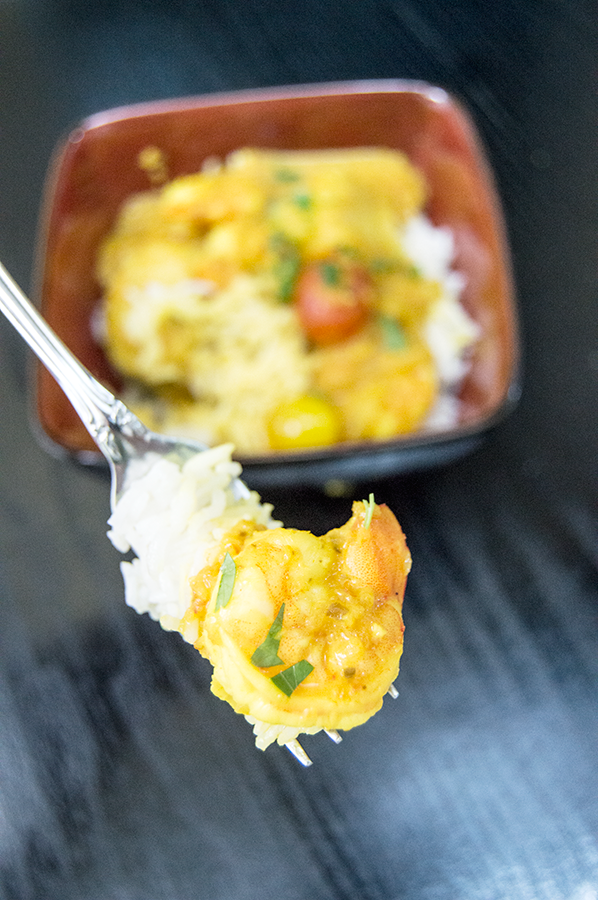
Alright, Hungry People, that’s the lowdown on how to whip up a fantastic Thai Coconut Prawn and Scallop Curry. Trust me, once you dive into this bowl of creamy, spicy, and citrusy goodness, you’ll wonder how you ever lived without it in your recipe arsenal. From the myriad of flavors to the succulent seafood, this dish is a homerun in the comfort food league. Enjoy!
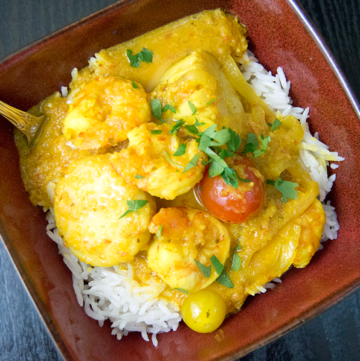
Thai Coconut Prawn Curry
Ingredients
- 16 oz shrimp peeled
- 4 large scallops
- 1 cup coconut milk
- 1 white onion
- 4 tablespoons Thai seasoning paste (lemongrass, cilantro, ginger, chili pepper)
- 3 tablespoons tamarind chutney
- 3 tablespoons turmeric
- 2 tablespoons red curry paste
- 2 tablespoons soy sauce
- 1 tablespoon sugar
- 3 cloves garlic minced
- 10 cherry tomatoes
- 3 tablespoons lemon juice
- 3 tablespoons lime juice
- 3 tablespoons ghee for sauting
- salt & pepper to taste
Instructions
- Use a food processor to pulse together half of the onion, cherry tomatoes, Thai seasoning paste, tamarind chutney, turmeric powder, red curry paste, soy sauce, white sugar, lemon juice, and lime juice until smooth.
- Melt one to two tablespoons of ghee in a wok over high heat. Add the remaining sliced white onion and sauté until browned and beginning to caramelize.
- Pour in the onion and spice mix. Stir occasionally until the sauce begins to separate solids from liquids, then let simmer for one to two minutes. Pour in the coconut milk, stir well, and return to a simmer.
- If using scallops, sear quickly on both sides until browned.
- Toss the uncooked shrimp and seared scallops into the sauce and simmer for an additional one to two minutes until pink and cooked through.
- Serve over your favorite rice and enjoy!



























